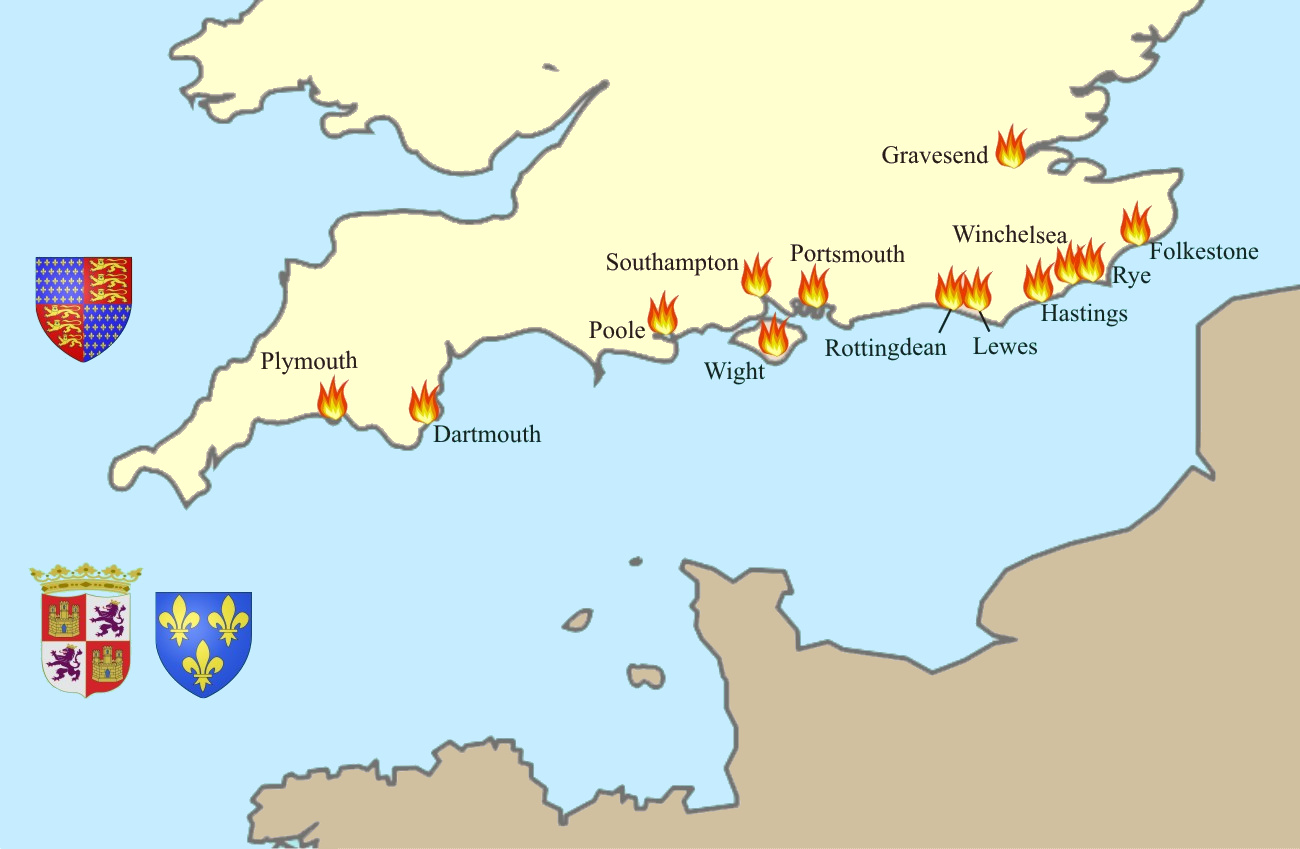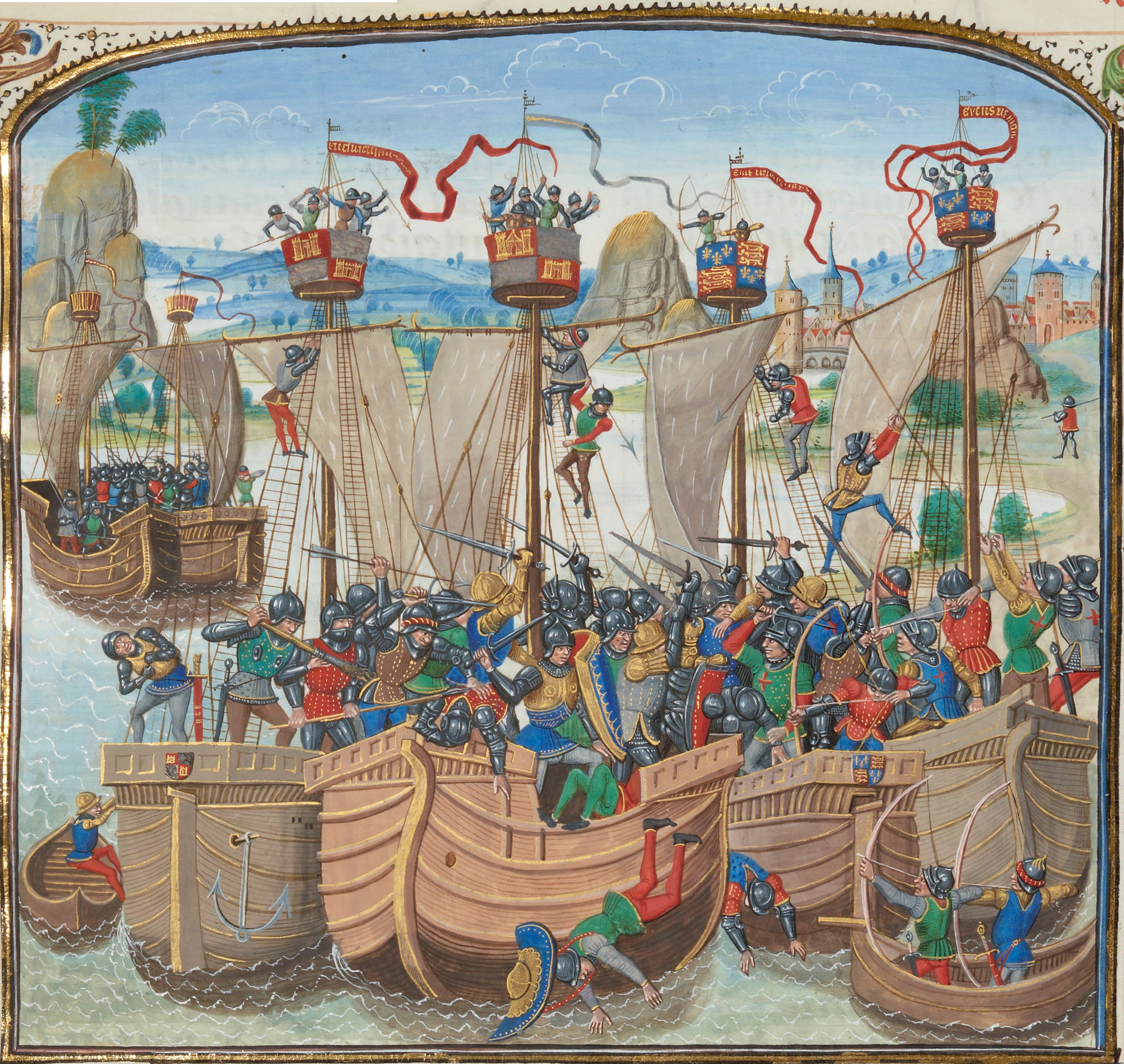|
Fernando Sánchez De Tovar
Fernando (or Fernán) Sánchez de Tovar (died 1384) was a Crown of Castile, Castilian soldier and admiral. Soldier of Castile During the Castilian Civil War, Sánchez de Tovar initially supported King Peter the Cruel, who appointed him Adelantado mayor of Castile, ''adelantado mayor'' of Castile in 1360 and ''frontero mayor'' of Murcia in 1364.Alfonso Franco Silva"Sánchez de Tovar, Fernán" ''Diccionario Biográfico Español'' (2018). In 1366, he betrayed the King and delivered the city of Calahorra to Pedro's brother and enemy, Henry II of Castile, Henry of Trastámara. One year later, Fernando Sánchez de Tovar fought on Henry's side in the Battle of Nájera. Around 1366, Henry rewarded Sánchez de Tovar with the lordship of Astudillo, Palencia, Astudillo. After the assassination of Peter in 1369, Henry bestowed on him the lordship of Gelves and made him his ''Guarda mayor del rey, guarda mayor''. Admiral In 1374, Sánchez de Tovar succeeded Ambrosio Boccanegra as Admiral of ... [...More Info...] [...Related Items...] OR: [Wikipedia] [Google] [Baidu] |
Crown Of Castile
The Crown of Castile was a medieval polity in the Iberian Peninsula that formed in 1230 as a result of the third and definitive union of the crowns and, some decades later, the parliaments of the kingdoms of Kingdom of Castile, Castile and Kingdom of León, León upon the accession of the then Castilian king, Ferdinand III of Castile, Ferdinand III, to the vacant List of Leonese monarchs, Leonese throne. It continued to exist as a separate entity after the personal union in 1469 of the crowns of Castile and Crown of Aragon, Aragon with the marriage of the Catholic Monarchs up to the promulgation of the Nueva Planta decrees by Philip V of Spain, Philip V in 1716. In 1492, the voyage of Christopher Columbus and the discovery of the Americas were major events in the history of Castile. The West Indies, Islands and Mainland of the Ocean Sea were also a part of the Crown of Castile when transformed from lordships to kingdoms of the heirs of Castile in 1506, with the Treaty of Villafá ... [...More Info...] [...Related Items...] OR: [Wikipedia] [Google] [Baidu] |
Jean De Vienne
Jean de Vienne (; 1341 – 25 September 1396) was a French knight, general and Admiral of France during the Hundred Years' War. Early life Jean de Vienne was born at Dole in the Franche-Comté, then part of the Holy Roman Empire. As a nobleman, he started his military career at the age of 19, and was made a knight at 21. In 1366–1367, he took a part of a Savoyard crusade led by Amadeus VI of Savoy against Bulgaria. Career By the age of 24, de Vienne was made Captain-General for the Franche-Comté. In 1373, Charles V made him ''Amiral de France''. Working with determination, de Vienne reorganised the navy, started an important programme of construction, created an effective coast guard and navigation police, organised watches along the coasts, and attributed licences for the building and selling of ships. Jean de Vienne was one of the first to understand that only by naval operations could serious harm be done to England. To this end he petitioned for strong support from ... [...More Info...] [...Related Items...] OR: [Wikipedia] [Google] [Baidu] |
England
England is a Countries of the United Kingdom, country that is part of the United Kingdom. It is located on the island of Great Britain, of which it covers about 62%, and List of islands of England, more than 100 smaller adjacent islands. It shares Anglo-Scottish border, a land border with Scotland to the north and England–Wales border, another land border with Wales to the west, and is otherwise surrounded by the North Sea to the east, the English Channel to the south, the Celtic Sea to the south-west, and the Irish Sea to the west. Continental Europe lies to the south-east, and Ireland to the west. At the 2021 United Kingdom census, 2021 census, the population was 56,490,048. London is both List of urban areas in the United Kingdom, the largest city and the Capital city, capital. The area now called England was first inhabited by modern humans during the Upper Paleolithic. It takes its name from the Angles (tribe), Angles, a Germanic peoples, Germanic tribe who settled du ... [...More Info...] [...Related Items...] OR: [Wikipedia] [Google] [Baidu] |
France
France, officially the French Republic, is a country located primarily in Western Europe. Overseas France, Its overseas regions and territories include French Guiana in South America, Saint Pierre and Miquelon in the Atlantic Ocean#North Atlantic, North Atlantic, the French West Indies, and List of islands of France, many islands in Oceania and the Indian Ocean, giving it Exclusive economic zone of France, one of the largest discontiguous exclusive economic zones in the world. Metropolitan France shares borders with Belgium and Luxembourg to the north; Germany to the northeast; Switzerland to the east; Italy and Monaco to the southeast; Andorra and Spain to the south; and a maritime border with the United Kingdom to the northwest. Its metropolitan area extends from the Rhine to the Atlantic Ocean and from the Mediterranean Sea to the English Channel and the North Sea. Its Regions of France, eighteen integral regions—five of which are overseas—span a combined area of and hav ... [...More Info...] [...Related Items...] OR: [Wikipedia] [Google] [Baidu] |
John Of Gaunt, 1st Duke Of Lancaster
John of Gaunt, Duke of Lancaster (6 March 1340 – 3 February 1399), was an English royal prince, military leader and statesman. He was the fourth son (third surviving) of King Edward III of England, and the father of King Henry IV. Because of Gaunt's royal origin, advantageous marriages and some generous land grants, he was one of the richest men of his era and an influential figure during the reigns of both his father and his nephew, Richard II. As Duke of Lancaster, he is the founder of the royal House of Lancaster, whose members would ascend the throne after his death. His birthplace, Ghent in Flanders, then known in English as ''Gaunt'', was the origin of his name. John's early career was spent in France and Spain fighting in the Hundred Years' War. He made an abortive attempt to enforce a claim to the Crown of Castile that came through his second wife, Constance of Castile, and for a time styled himself as King of Castile. When Edward the Black Prince, Gaunt's el ... [...More Info...] [...Related Items...] OR: [Wikipedia] [Google] [Baidu] |
Admiral Of Castile
Admiral of Castile was the representative of the King of Castile at the head of the Navy. It was a dignity created in 1247 that lasted until 1705. Admiral of Castile The title of Admiral of Castile was created by King Ferdinand III the Saint in 1247 for the successful Siege of Seville, appointing Ramón de Bonifaz to that position. After the conquest of Seville, this title was covered with great authority, power and pre-eminence, which are specified by Alfonso X the Wise in the Siete Partidas. The Admiral resided in Seville, because the Royal Shipyards were constructed there and it was the place where the fleets were armed and organized and where the special maritime court was also located. Among the multiple attributions and powers of the admiral, they included having a voice and casting vote in the Council of Castile. From 1405 to 1705, this position became the heritage of the Enríquez family, descendants of the infante Fadrique Alfonso, natural son of King Alfonso XI o ... [...More Info...] [...Related Items...] OR: [Wikipedia] [Google] [Baidu] |
Ambrosio Boccanegra
Ambrosio Boccanegra (died 1373) was a Castilian sailor of Genoese origin from the Boccanegra family. He was the nephew of Simone Boccanegra, the first Doge of Genoa, son of Egidio Bocanegra, who in 1341 went to Castile with a fleet in support of King Alfonso XI of Castile. He commanded the Castilian forces at the Battle of La Rochelle The Battle of La Rochelle was a naval battle fought on 22 and 23 June 1372 between a Castilian fleet commanded by the Castilian Admiral Ambrosio Boccanegra and an English fleet commanded by John Hastings, 2nd Earl of Pembroke. The Castilian ... in 1372 and defeated the Portuguese at the Battle of Lisbon (1373), during the Second Fernandine War. References Year of birth unknown 1373 deaths 14th-century Genoese people 14th-century Castilians Italian sailors Admirals Ambrosio {{Spain-mil-bio-stub ... [...More Info...] [...Related Items...] OR: [Wikipedia] [Google] [Baidu] |
Guarda Mayor Del Rey
The Chief of the King's Guard, King's Chief Guard, or Chief of the King's Corps, (''guarda-mor do rei'', or ''guarda-mor do Corpo do Rei'' in Portuguese) was an officer of the Crown of Castile and of the Portuguese Royal Family whose function was to protect the monarch and command his guard. History Some authors, when speaking of this position, state that it was more "honorific than effective", although Jaime de Salazar y Acha points out that this may have been the case during the last period of the Late Middle Ages, but not in its beginnings, since in the first instance the king's security was in the hands of his ensign, but the latter in turn would delegate this responsibility to the officer of lower rank who would possibly, over the centuries, evolve into, in the opinion of this historian, the officer known as the Chief of the King's Guard. When the office of the king's ensign was monopolized by members of the high nobility in the 13th century, such as the Lara and the Haro ... [...More Info...] [...Related Items...] OR: [Wikipedia] [Google] [Baidu] |
Gelves
Gelves is a city located in the province of Seville, in Andalusia, Spain. According to the 2006 census ( INE), the city has a population of 8,325 inhabitants. It lies on the west bank of the Guadalquivir river. The city of Gelves is not to be confused with Los Gelves, the Spanish name for the island of Djerba off the coast of Tunisia, where the Spanish fought important battles in 1510 and 1520. Gelves is in the metropolitan agglomeration of the regional capital, Seville, but is a separate municipality, bordering to the north with San Juan de Aznalfarache, west with Mairena del Aljarafe and southwest with Palomares del Río, which are also in the conurbation. Gelves also borders the municipality of the city of Dos Hermanas to the southwest. Across the river, Gelves faces the Sevillian district of Los Remedios on the Isla de La Cartuja. See also * List of municipalities in Seville Province of Seville, Seville is a provinces of Spain, province in the Autonomous communitie ... [...More Info...] [...Related Items...] OR: [Wikipedia] [Google] [Baidu] |
Astudillo, Palencia
Astudillo is a Spanish municipality in the autonomous community of Castilla y León belonging to the province of Palencia (province), Palencia. It is located northeast of the provincial capital, and has 1,106 inhabitants (2011) with an area of . Toponym The name Astudillo comes from Roman times, specifically from ''Tito Estatilio Tauro'' (Titus Statilius Taurus), the Roman general whose legions had their field operations in this Vaccaei region around the year 29 BC. According to historical records, the name evolved from Ancient Latin in the times of Augustus Caesar, Augustus to modern Castilian: Statilium, Stutilium, Stitellum, Stutellium, Stutiellum, Stutiello, Studellum, Astutello, Astodello, Estodello, Estudillo, Astudil and Astudillo. STUTILIUM can be found in the motto of the official Coat of Arms of the municipality of Astudillo. History Astudillo has ancient origins, Roman remains having been found within its surroundings. In the Middle and modern ages it was in ... [...More Info...] [...Related Items...] OR: [Wikipedia] [Google] [Baidu] |




